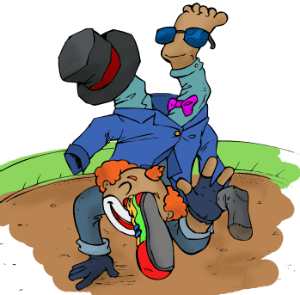This lesson plan uses several poems from Poetry4kids.com to show how to identify the rhyme scheme of a poem. Students will analyze the poems to determine the rhyme schemes of each.
Click here for a printable copy of this lesson plan for use in the classroom.
Rhyming words are words that sound the same at the ends, such as cat / hat, or jumping / bumping.
When a poem has rhyming words at the ends of its lines, these are called “end rhymes.” Here is an example of end rhyme:
My cat is nice.
My cat likes mice.
A “rhyme scheme” is a way of describing the pattern of end rhymes in a poem. Each new sound at the end of a line is given a letter, starting with “A,” then “B,” and so on. If an end sound repeats the end sound of an earlier line, it gets the same letter as the earlier line.
Here are three slightly different cat poems, each with a different rhyme scheme. The first is AABB, the second is ABAB, and the third is ABCB):
My cat is nice.
My cat likes mice.
My cat is fat.
I like my cat. |
A
A
B
B |
My cat is nice.
My cat is fat.
My cat likes mice.
I like my cat. |
A
B
A
B |
My cat is gray.
My cat is fat.
My cat is cute.
I like my cat. |
A
B
C
B |
Exercise:
- Read the following poems by Kenn Nesbitt.
- For each poem, identify the rhyme scheme and write it below the poem.
Mr. Brown the Circus Clown
Mr. Brown, the circus clown
puts his clothes on upside down.
He wears his hat upon his toes
and socks and shoes upon his nose.
Rhyme scheme: _____________
My Penmanship is Pretty Bad
My penmanship is pretty bad.
My printing’s plainly awful.
In truth, my writing looks so sad
it ought to be unlawful.
Rhyme scheme: _____________
All My Great Excuses
I started on my homework
but my pen ran out of ink.
My hamster ate my homework.
My computer’s on the blink.
Rhyme scheme: _____________
Today I Had a Rotten Day
Today I had a rotten day.
As I was coming in from play
I accidentally stubbed my toes
and tripped and fell and whacked my nose.
Rhyme scheme: _____________

